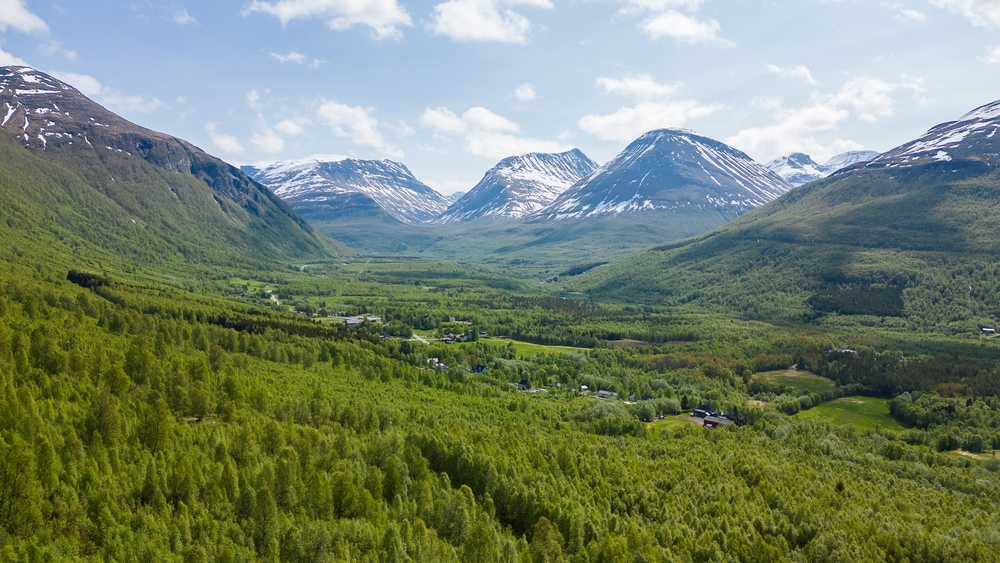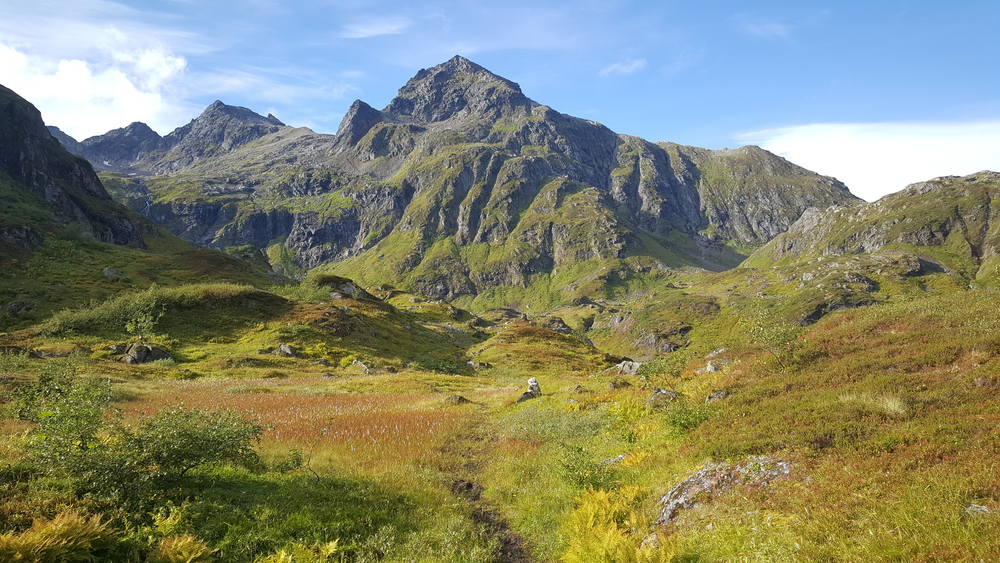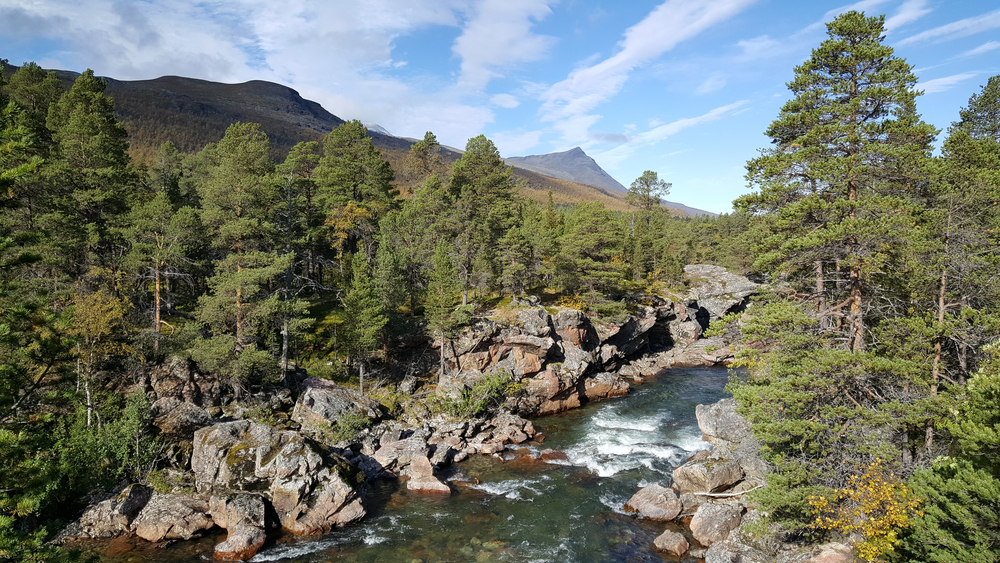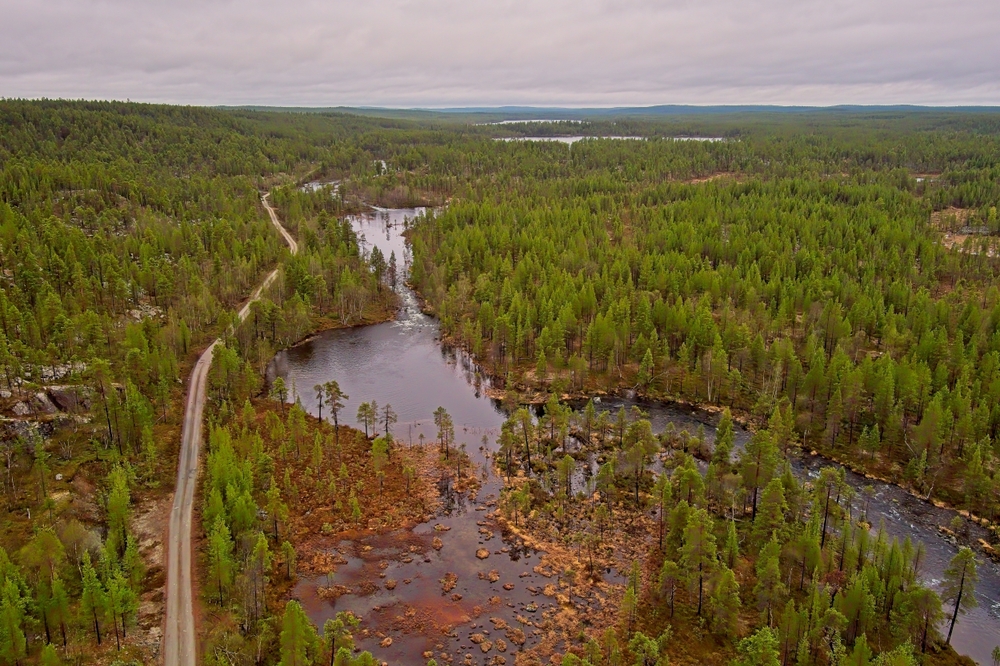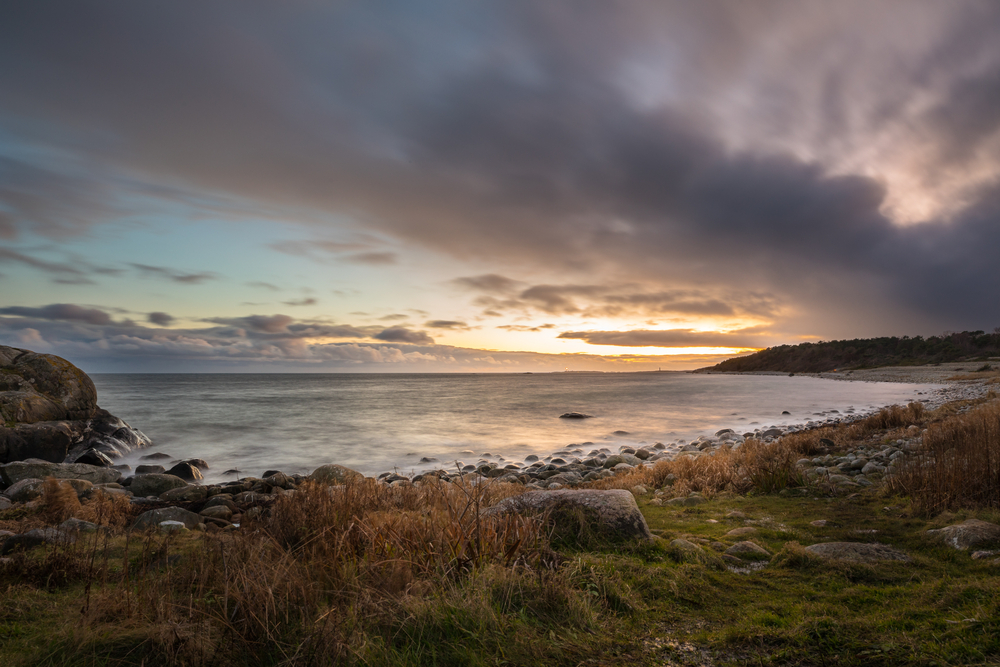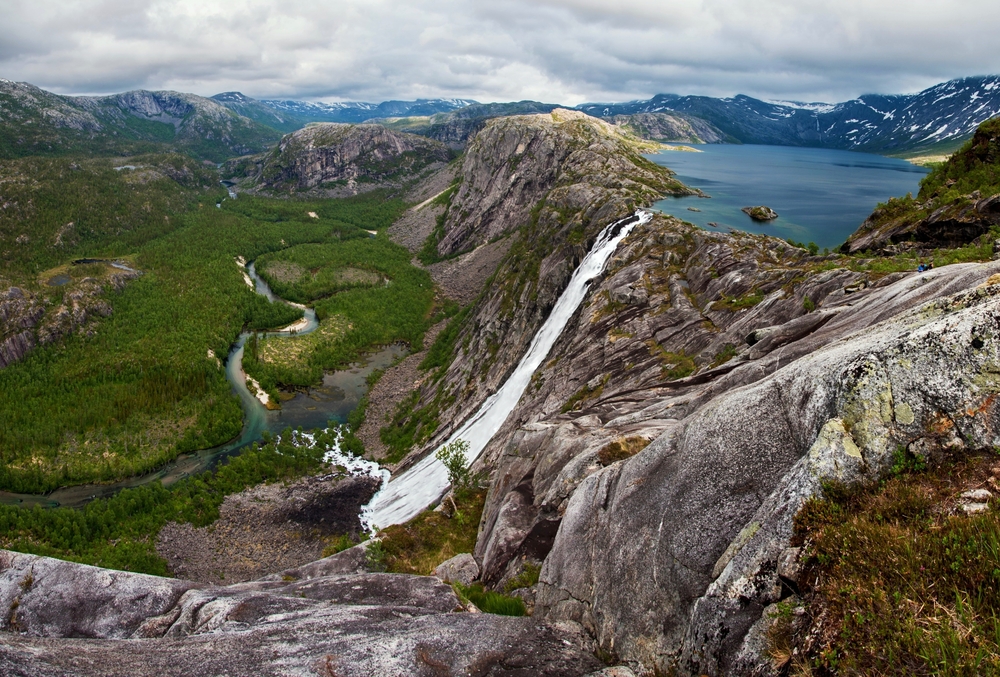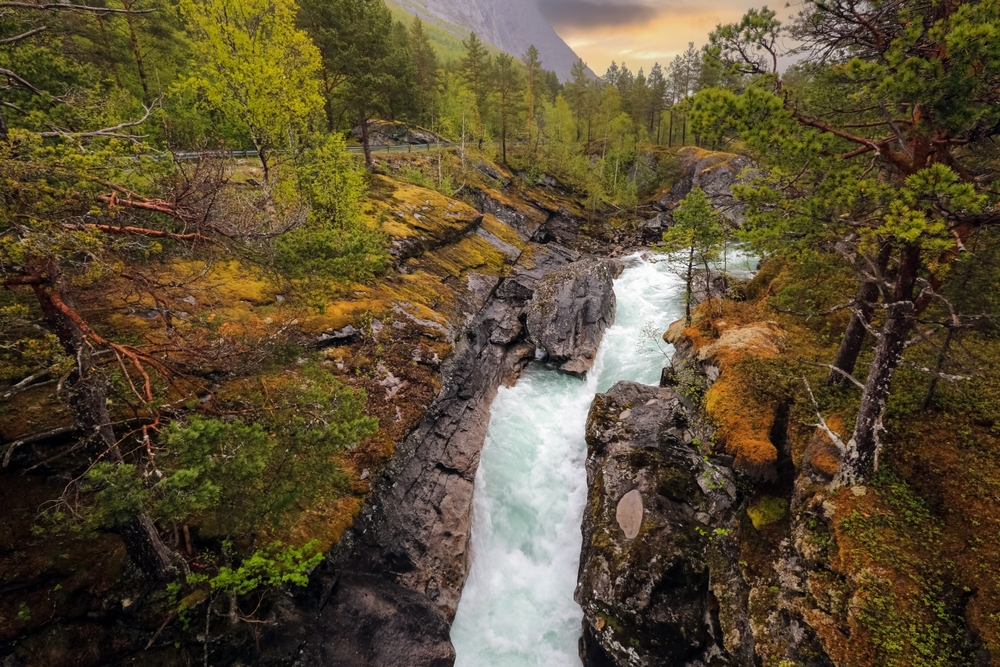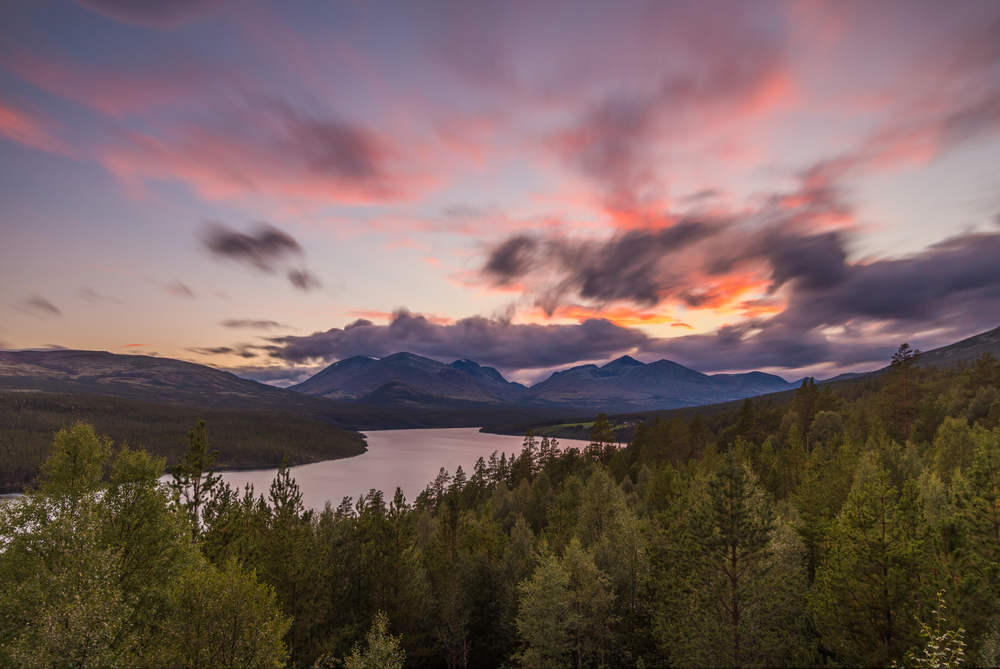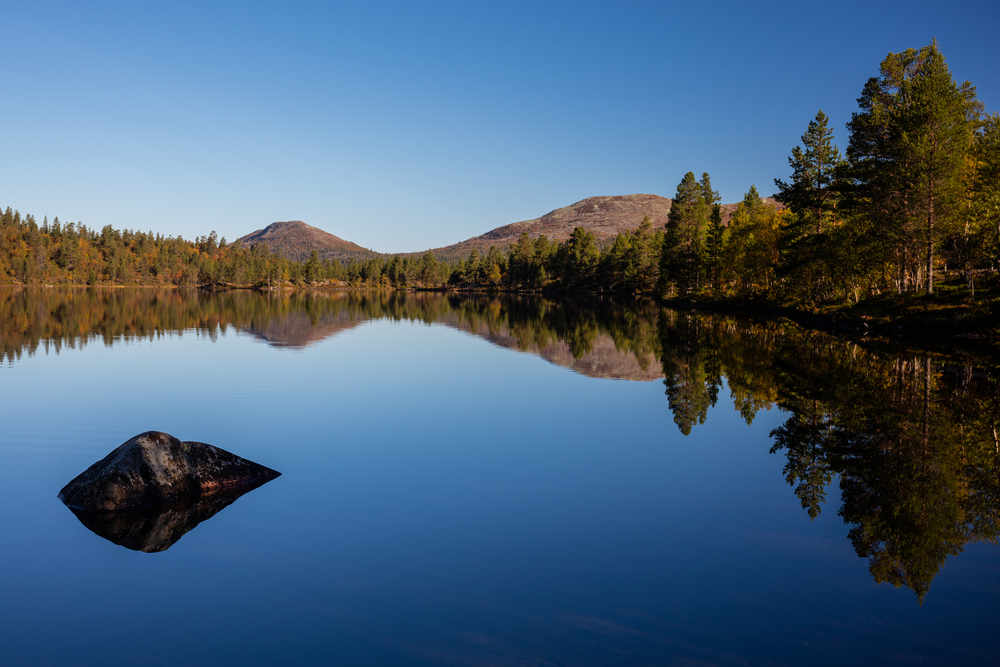Reisa Overview
Reisa National Park, known as Reisa nasjonalpark in Norwegian, is a stunning protected area located in Troms og Finnmark County in northern Norway.
Covering an area of approximately 309 square miles (800 square kilometers), this park is nestled within the dramatic landscapes of the Arctic region, offering a mix of deep valleys, high plateaus, and rugged mountain terrain. It is situated near the municipality of Nordreisa, with the Reisa River serving as a defining feature of the park.
The park’s location, extending from the lower Reisa Valley up to the vast Finnmarksvidda plateau, allows for a diverse range of ecosystems that shift from lush river valleys to barren, windswept tundra.
The landscape of Reisa National Park is marked by steep cliffs, cascading waterfalls, and narrow gorges, creating an awe-inspiring backdrop for visitors. One of the most famous landmarks is the Mollisfossen waterfall, which plunges nearly 885 feet (269 meters) in total height, making it one of the tallest waterfalls in Norway. The Reisa River, which cuts through the valley, is a significant geographical feature, carving deep canyons through the bedrock.
As the river winds through the park, it creates numerous smaller waterfalls and rapids that add to the dramatic scenery. The park is also home to vast plateaus covered in birch forests and alpine meadows, gradually transitioning into Arctic tundra at higher elevations. The vegetation varies based on altitude, with lush green forests at lower levels and hardy mosses and lichens dominating the higher elevations.
Reisa National Park provides a vital habitat for a variety of wildlife, with many species adapted to the Arctic and sub-Arctic environment. Among the most notable mammals found here are the Eurasian lynx, wolverine, and Arctic fox, although these elusive predators are rarely seen. Moose are a common sight, often grazing in the valleys or near the river.
Other large mammals include reindeer, which are herded by the indigenous Sámi people in the surrounding region. Smaller mammals such as red foxes, hares, and stoats also inhabit the area.
The park is a birdwatcher’s paradise, with species such as the golden eagle, rough-legged buzzard, and gyrfalcon soaring above the cliffs. Waterfowl and waders can be spotted along the Reisa River, particularly in the summer months when migratory birds arrive in large numbers.
Visitors to Reisa National Park are drawn to its natural beauty and opportunities for outdoor recreation. Hiking is a popular activity, with well-marked trails leading through the valley and up to breathtaking viewpoints overlooking the river and waterfalls. Canoeing and fishing on the Reisa River provide another way to experience the park, with the river being particularly well known for its Atlantic salmon population.
In winter, the park becomes a destination for cross-country skiing and snowshoeing, offering a true Arctic wilderness experience. The park is also a key area for Sámi culture, and visitors can learn about traditional reindeer herding practices in the surrounding region.
Conservation efforts in Reisa National Park focus on protecting its fragile Arctic ecosystem and preserving the habitats of its diverse wildlife. The park’s management works closely with local Sámi communities to ensure sustainable land use while promoting responsible tourism.
Despite facing challenges such as climate change, which threatens the region’s biodiversity, conservation efforts have successfully maintained the park’s pristine landscapes and rich biodiversity.








































































